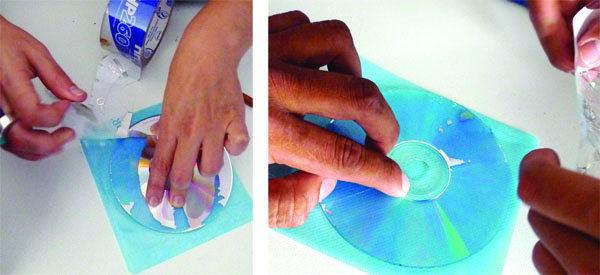Taller Libre: Espectrometro
January 17th, 2011Tags: analytical, escuelab, fablab, instrumentation, lima, peru, spectrometer, spectrometry, visible light
Jeff Warren and I taught a free workshop on building and using visible light spectrometers with the Fab Lab Lima at Escuelab.

Sensors are getting more widely used by individuals in personalised and customised projects, but they only provide a limited amount of information of the world: namely, is the one thing the sensor was engineered for measuring. Instead, spectroscopies offer a fingerprint of the world they are sensing, which is more powerful, but also requires more interpretation. We started looking into low-tech spectroscopy by starting with the visible spectrum: what is being reflected and what is being absorbed by the objects around us? What does that mean?

First we began by splitting white light into the colours it makes up. We did this by repurposing CDs instead of ordering expensive diffraction gratings online. The groves of the CD disperse the different wavelengths of light different amounts, giving you the spectrum of the light.

Direct sunlight should give more or less the same amount of each wavelength. Plants however, absorb certain wavelengths of light for photosynthesis, and reflect the others. If the plant is healthy, you should see a decrease in those wavelengths in the spectra.

Fluorescent bulbs use gas-discharge to make light. Instead of a full spectrum like the sun, fluorescent bulbs emit a limited spectrum that is based on the emission of the mercury vapour and of the emission of the phosphorescent coating which is bombarded by the emission of the mercury vapour. This shows as distinct lines in a spectra instead of a full rainbow, easily visible with the DIY spectrometer.

Jeff designed an interface with which you can analyse and compare photographs you took of different spectra. Lining up the spectrum with the horizontal axis, it will determine the intensity of the light at different wavelengths.
We also tried looking at the near-infrared portion of spectra by removing the infrared filters from digital cameras. I’m still unsure how much of the near-infrared you can see even without the filter, so I’ll be back reporting on results for that soon.
